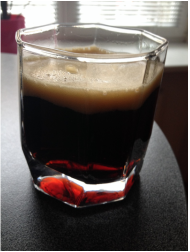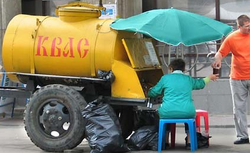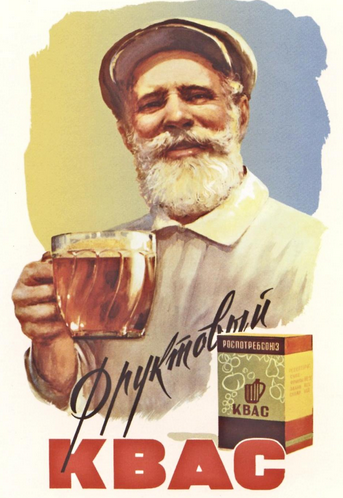 Re-use your stale bread... Re-use your stale bread... I just arrived in Belarus to give a seminar on Regenerative Agriculture, and settled into a traditional fermented beverage, Kvass. Most of our "gourmet" foods are ferments of one kind of another, and inclusion of diverse ferments in the diet is shown repeatedly around the world for it's wide ranging health benefits. Indeed every culture on the planet utilizes Lacto- ferments of one kind or another. Coming from a generation with a profusely weird understanding of microbiology I would encourage anyone to learn about fermented foods. Perhaps the most approachable book on the subject is by Sandor Katz who I had the pleasure to meet at the incredible Possibility Alliance in Missouri a few years back. (This book covers all kinds of delicious nutritious goodies) Kvass has been a common drink in Eastern Europe since ancient times, comparable with other ancient fermented grain beverages including beer brewed from barley by the ancient Egyptians, the millet beer of Africa, the so-called rice wines of Asia, the chicha made with corn or cassava by the native Americans.  Russian Kvass street vendor Russian Kvass street vendor Kvass is made by the natural fermentation of wheat, rye or barley bread, and can be flavored using fruit, berries, raisins, or birch sap collected in the early spring. Super easy to make, Kvass is served with the yeast still in it, which adds to its unique flavor as well as its high vitamin B content. The one I'm drinking is a somewhat commercialized version from a store, but I have my eyes out for a home made version around town. There are a lot of ways to make Kvass. The simplest involves stuffing old stale bread to half fill an old bottle, filled up with water and a few raisins and left for a few days. The creamy bubbly white drink is full of lactobacillus, a tonic for for intestines. Most recipes call for more elaborate processes, toasting old (traditionally dark rye) breads and pouring on boiling water and leaving for some hours before filtering and adding yeast culture and flavoring such as mint, honey, cinnamon or fruit juices. If you have a look online you can find all kinds of recipes and methodologies for making Kvass, including an apparent trend of making salted beetroot Kvass. House Kvass is typically made with black or rye bread baked into sukhari (croutons), yeast and zakvaska (kvass fermentation starter). The taste depends on the proportions of these essential ingredients. There are numerous variations of the following basic recipe; Ingredients: rye bread, sugar, active dry yeast, water, raisins. Method:
There is a famous saying "Bad kvas is better than good water." In Russia Kvass is used in some cold soup recipes such as okroshka, an ancient Russian dish made with vegetables and cold boiled meat and/or fish (in proportions one to one). Interestingly in 1913 Russian bacteriologists proved that Kvass is a germicide by showing that typhus bacteria die in the drink. Cheers, I'll drink to reestablishing our relationship to microbiology!
2 Comments
Leave a Reply. |
Details
Like us on FB Below for regular updatesStay up to date with customized updates you want to receive
Upcoming coursesArchives
December 2016
Categories
All
|


 RSS Feed
RSS Feed